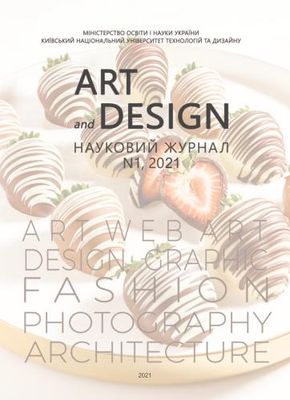THE IDEA OF EDUCATION IN THE MOSAIC OF M.A. STOROZHENKO "LVIV STAUROPEGION BROTHERHOOD OF XVI–XVIII CENTURIES"
DOI:
https://doi.org/10.30857/2617-0272.2021.1.12Keywords:
Mykola Storozhenko, monumental art of Ukraine of the XX century, mosaics in the interiors of N.N. Bogolyubov ITF, Lviv Stauropigial BrotherhoodAbstract
The purpose of the article is to study the history of creation and the ideological content of the mosaic by Mykola Andriyovych Storozhenko (1928–2015) "Lviv Stavropegic Brotherhood of the 16th – 18th centuries." in the interiors of N.N. Bogolyubov ITF of the National Academy of Sciences of Ukraine in Feofaniya (1969) in the context of the heritage of Ukrainian and world monumental art. Methodology.The study uses historical and cultural, comparative, iconographic and iconological methods. We rely on the hermeneutics of Hans-Georg Gadamer and the theory of "big time" by M.M. Bakhtin, which allows us to consider the mosaics of M.A. Storozhenko in the context of the heritage of world art. Main results. In the mosaic "Lexicon”, the greatness of the word is affirmed by means of monumental art. Storozhenko restores its sacred meaning, forgotten in the days of atheism. The master showed the importance of the printed word for the formation of Ukrainian culture. The ideological content of the monumental composition “Stauropegia. Lexicon": the educational value of words and art. Combining the interiors of the printing house and art workshop with the architectural space of the city, the master creates the image of Lviv as a cultural and educational center of Orthodoxy in Western Ukraine. The use of comparative analysis showed that M. Storozhenko synthesizes the artistic heritage of the ancient world (Tripoli, Egypt), Kievan Rus (monumental art and miniature), Renaissance, Rococo, Cubism, abstractionism and others. Polystylism, characteristic of art of the XX–XXI centures, became the basis for the formation of the individual artistic style of one of the leading artists of our time. Scientific novelty. The cultural-historical and artistic meaning of the monumental mosaic of M.A. Storozhenko has been studied in connection with the problems of national self-identification and polystylism of art of the twentieth century. Practical significance. The results of the study are necessary for the creation of a modern history of monumental and decorative art of Ukraine.
Downloads
Download data is not yet available.
Downloads
Published
2021-05-17
How to Cite
Тарасенко, О. А., Тарасенко, А. А., & Кубриш, Н. Р. (2021). THE IDEA OF EDUCATION IN THE MOSAIC OF M.A. STOROZHENKO "LVIV STAUROPEGION BROTHERHOOD OF XVI–XVIII CENTURIES". Art and Design, (1), 133–145. https://doi.org/10.30857/2617-0272.2021.1.12
Issue
Section
Articles

